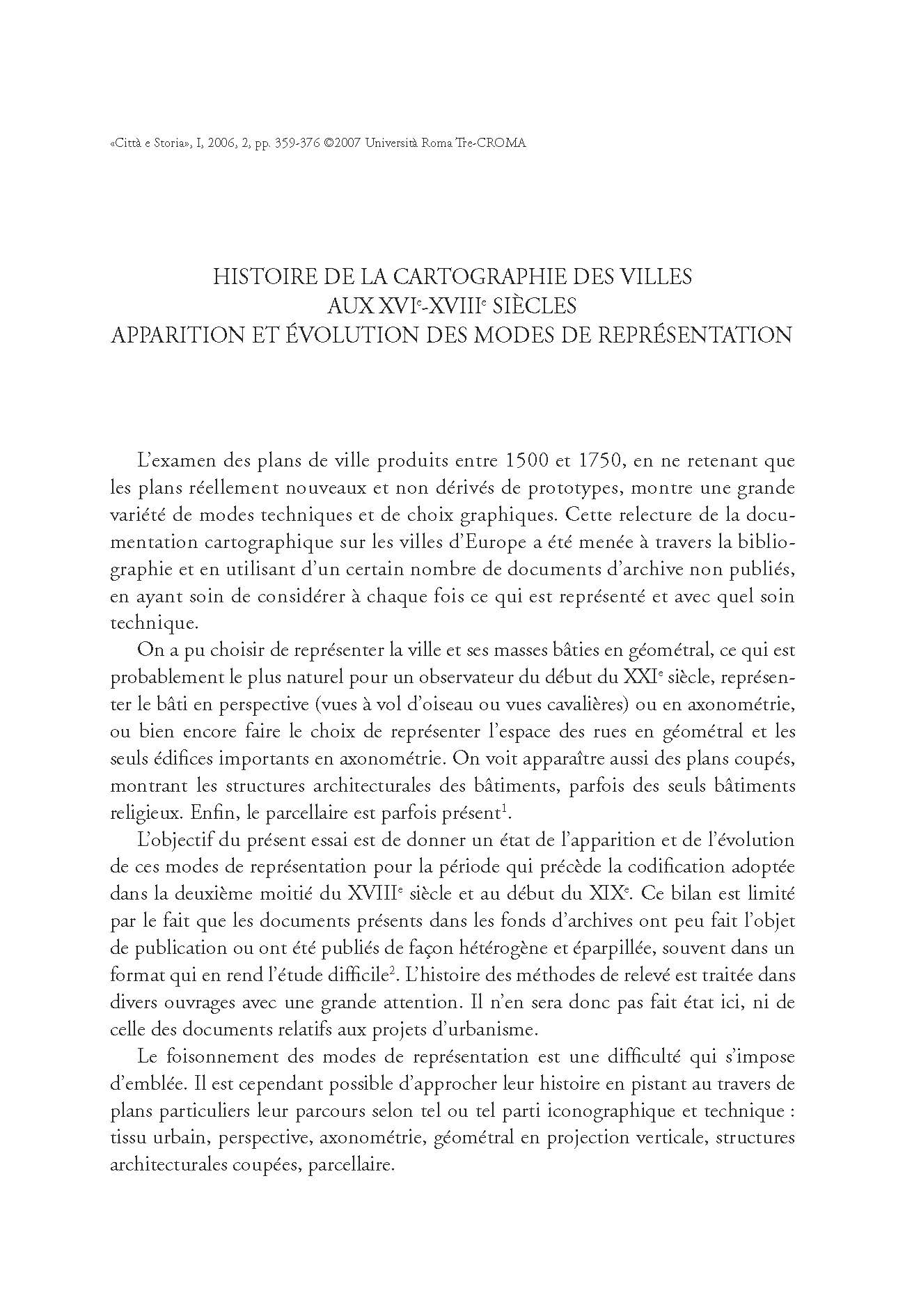Histoire de la cartographie des villes aux XVIe-XVIIIe siècles. Apparition et évolution des modes de représentation
6,00 €
Town maps were produced between 1500 and 1750 according to a varied solutions, corresponding to different purposes. The archaic urban cartography, dominated by symbolic representation, is progressively replaced in the 16th century by representations of a continue and objectivated space using triangulation invented in the late 15th century. Numerous precise geometral plans were produced by the military engineers. In civil contexts, the desire of images more similar to the perceived reality leads to axonometric drawings showing cities in volume on the basis of geometral plans. This technique requires a huge work of measuring in the field and so was later abandoned. The worth of geometrical maps for technical uses was slowly recognised outside the military domain. Triangulated cadastral plans become frequent in urban context in the 18th century. The utilisation of precise plans for building licences and urban transformations develops only from the mid-18th century. The historiographical view that sees the generalization of geometral mapping only in 18th century has to be questioned, as it is already widespread from the early 16th century. Axonometric maps, the summit of urban mapping during the Modern period, have long been neglected as misinterpreted.
Town maps were produced between 1500 and 1750 according to a varied solutions, corresponding to different purposes. The archaic urban cartography, dominated by symbolic representation, is progressively replaced in the 16th century by representations of a continue and objectivated space using triangulation invented in the late 15th century. Numerous precise geometral plans were produced by the military engineers. In civil contexts, the desire of images more similar to the perceived reality leads to axonometric drawings showing cities in volume on the basis of geometral plans. This technique requires a huge work of measuring in the field and so was later abandoned. The worth of geometrical maps for technical uses was slowly recognised outside the military domain. Triangulated cadastral plans become frequent in urban context in the 18th century. The utilisation of precise plans for building licences and urban transformations develops only from the mid-18th century. The historiographical view that sees the generalization of geometral mapping only in 18th century has to be questioned, as it is already widespread from the early 16th century. Axonometric maps, the summit of urban mapping during the Modern period, have long been neglected as misinterpreted.

